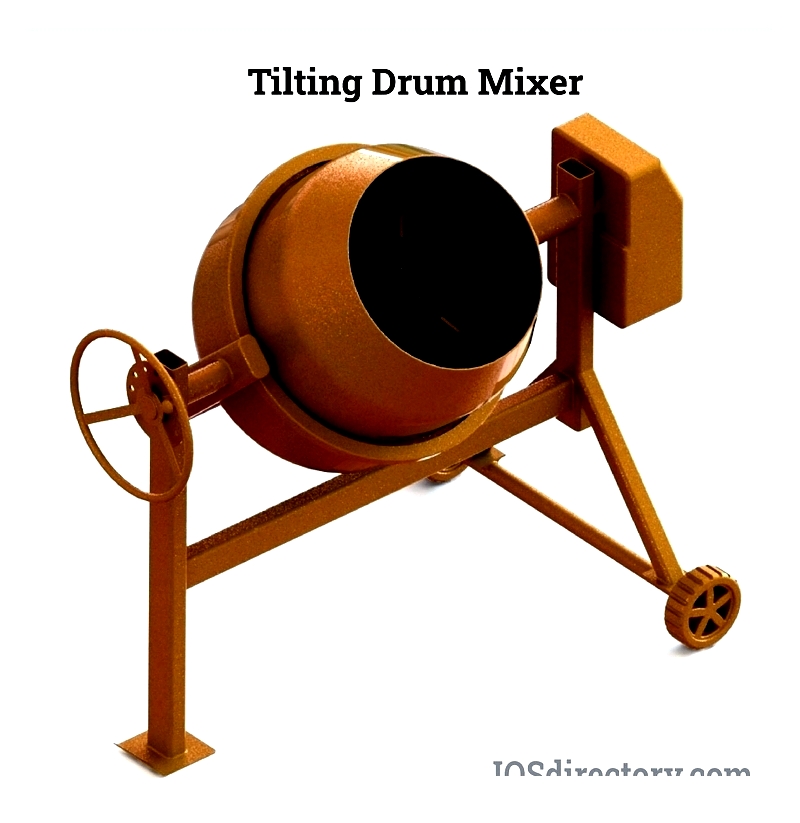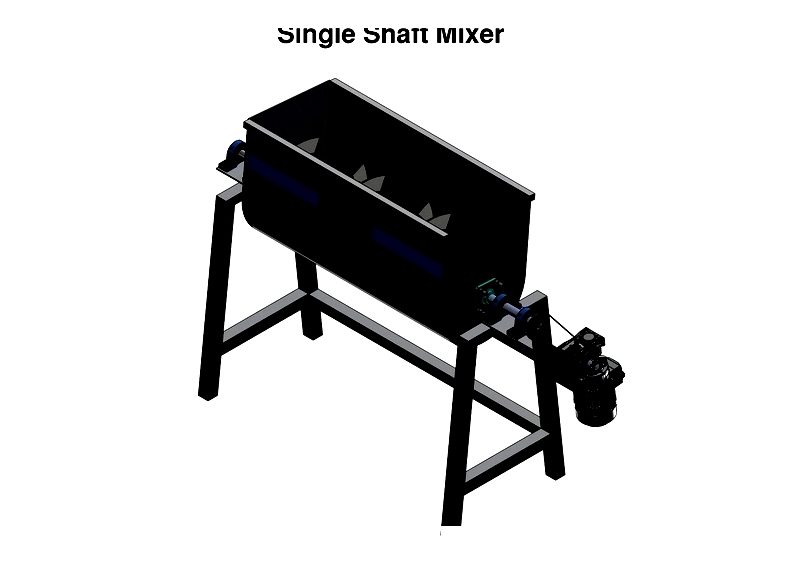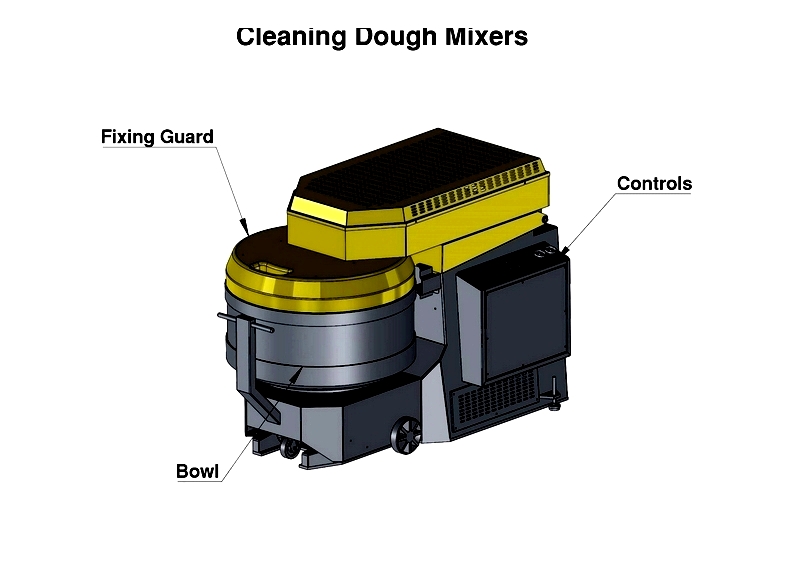Introduction
This article provides an in-depth exploration of various mixer types.
It covers detailed information on topics including:
- Working Principles of Mixers
- Different Mixer Types
- Mixer Applications and Advantages
- Additional Relevant Information

Chapter 1: Fundamental Principles of Mixer Operation
Mixing typically involves several scenarios: solid-to-solid dispersion, solid-to-liquid, liquid-to-gas, and two liquid-to-liquid interactions (miscible and immiscible). The mixing effectiveness depends on the strength and characteristics of turbulence and opposing forces. When these opposing forces are stronger, achieving thorough mixing becomes more critical.
Mixer Overview
A mixer is a specialized device designed for blending, emulsifying, homogenizing, and combining various ingredients essential for manufacturing processes. Mixing plays a vital role in producing commercial and industrial products like pharmaceuticals, cosmetics, and food items. Precise control is necessary, especially when handling incompatible or dissimilar materials.
Mixer performance is evaluated by its ability to consistently reproduce mixing processes while maintaining uniformity. The varying properties of mixed materials add complexity, requiring careful handling. Successful mixing begins with thorough material analysis to ensure process effectiveness. Like other industrial processes, mixing often requires equipment customized for specific production needs.
It's important to distinguish between blending and mixing, as they serve different purposes despite apparent similarities. Blending gently combines materials to create a uniform new substance, while mixing combines ingredients that may separate back to their original states. This distinction is crucial when selecting a mixer, as most applications aim to create a new uniform substance through blending.

Industrial mixers vary widely, from compact units for plastic polymers to larger models for pulverizing and blending pellets and stones. Successful mixing depends on efficiency, equipment quality, durability, and reliability. Industrial mixers are essential components in numerous industrial applications.
Key Considerations for Industrial Mixer Selection
Material Characteristics
Selecting an appropriate mixer starts with evaluating the materials to be mixed, which vary across industries. These may include liquids, emulsions, slurries, pastes, solid-liquid combinations, and powders. Understanding their consistency, properties, and characteristics helps choose the right mixer for specific requirements.
Material shape, density, size, and static charge affect interaction and blending. Each factor is critical for selecting the optimal mixer.
- Shape - Materials come in various shapes (triangles, oblongs, flakes) that affect blending resistance. An effective mixer must modify particle shapes for optimal blending.
- Density - Density influences particle flow. Similar densities promote smooth blending.
- Size - Different-sized particles may cause smaller ones to lodge between larger ones. Larger particles often require preparation before blending.
- Static - Blending friction generates static, which can be neutralized with static arrestors.
Manufacturers often customize equipment for specific needs. Material volume is particularly important, as batch sizes must match mixer capacity. For example, drum mixers typically hold 50-100 gallons (190-380 liters), while agitator mixers range from 16-264 gallons (60-1000 liters).
Liquid Viscosity
Viscosity measures a liquid's resistance to flow and mixing, determined by molecular movement. Measured in centipoise (cps), water has a viscosity of 1 cps in laminar flow. Materials exhibit varying cps values.
Higher viscosity results in more laminar flow. Mixer designs must ensure adequate agitation and uniformity. High-viscosity materials require specific torque and blade types.
Mixing efficiency depends on torque (horsepower divided by RPM). High-viscosity applications often need higher torque or lower RPMs, requiring robust drive systems, larger shafts, and wider impellers. Specialized impellers are essential for viscous fluids.
Viscous fluids often show pseudoplastic or thixotropic properties. Pseudoplastic and thixotropic fluids thin under shear, with thixotropic fluids thinning over time when sheared (like ketchup after shaking).
Effective high-viscosity mixing requires gearboxes that reduce RPM and increase torque. Adequate shaft diameters accommodate larger impellers with extensive blades for better surface contact.
Mixing Vessel Capacity
Smaller tanks enable efficient pumping and mixing, while larger tanks may require different approaches. For instance, large oil tanks (100,000 barrels) use side-entering mixers and may take hours or days to blend properly. Extended mixing times in large tanks often require multiple smaller support mixers. Small vessels typically handle production, while large tanks mainly serve storage purposes.
Mixing Duration
The blending process includes loading, mixing, packing, and cleaning stages. evaluating mixer efficiency requires determining exact time requirements per stage. Each mixer has standard average mixing times, including loading and packing. The complete cycle may exceed just the blending phase.
Cleanliness and Maintenance
Mixers with multiple moving parts can accumulate product on bearings, walls, and paddles, causing product loss and contamination risks. Addressing these concerns in design and maintenance is essential.

Considering drying and cleaning time for mixer parts is crucial. Disassembly and reassembly are time-consuming. When selecting a mixer, prioritize efficient manufacturing processes and easy maintenance. Thoroughness ensures balance between operation and maintenance.
Tip Speed Considerations
Tip speed is the distance an impeller covers in a given time. Calculated by multiplying impeller diameter by π (pi) for circumference, then by RPM or RPS, it's expressed in feet per minute or meters per second.
For dry materials, tip speed significantly affects cycle times. Higher speeds yield shorter cycles. Ribbon blenders operate at about 1.4 m/s, horizontal mixers at 6-10 m/s, and vertical high-speed mixers at 28-40 m/s.
Exceeding certain tip speeds causes fluidization, where dry materials behave like liquids, enhancing mixing (similar to using a food processor versus hand stirring). Vertical and horizontal high-speed mixers facilitate fluidized mixing better than ribbon blenders.
Higher tip speeds require more power. Ribbon blenders need 1 HP per 100-200 lbs (45.3-90.7 kg), while vertical high-speed mixers process under 4 lbs (0.45 kg) per HP.
Tip speed also affects agglomerated particle dispersion. Effective dry material blending often requires mixing larger particles with smaller, agglomerated ones. Uniform blends need separation of small clumped




